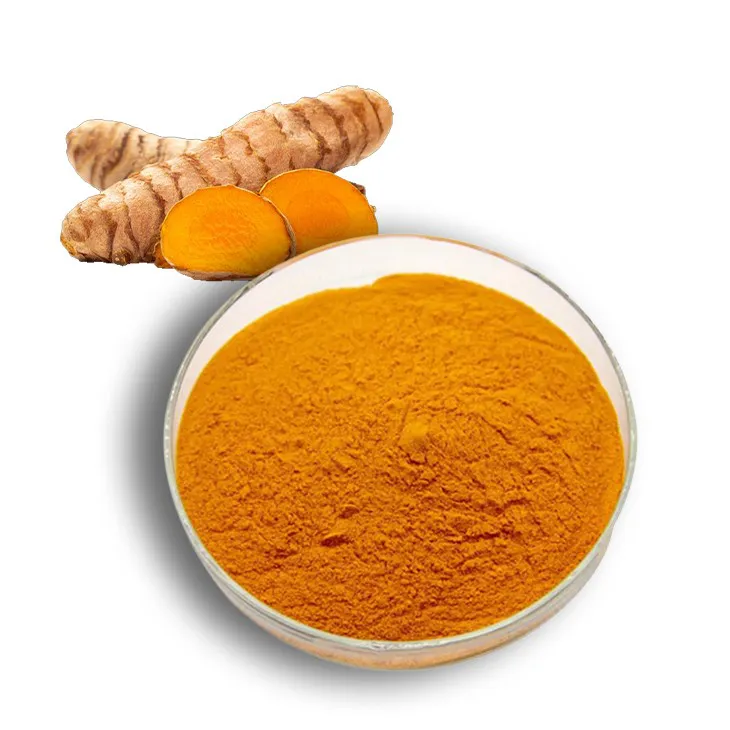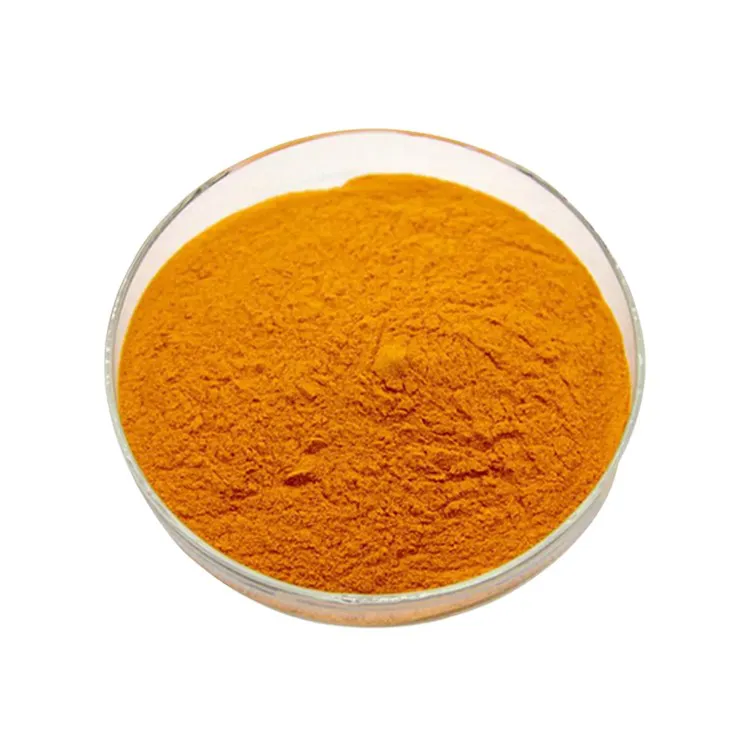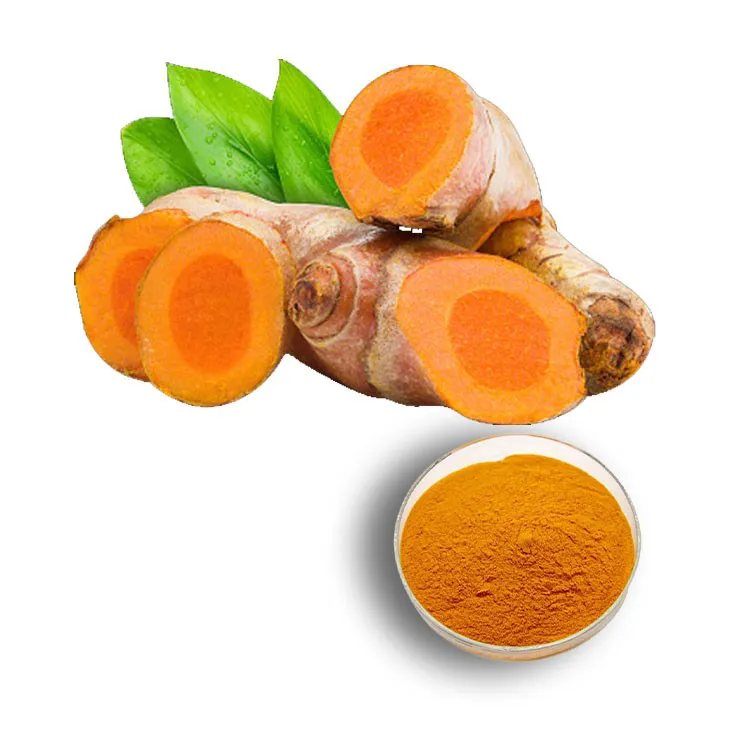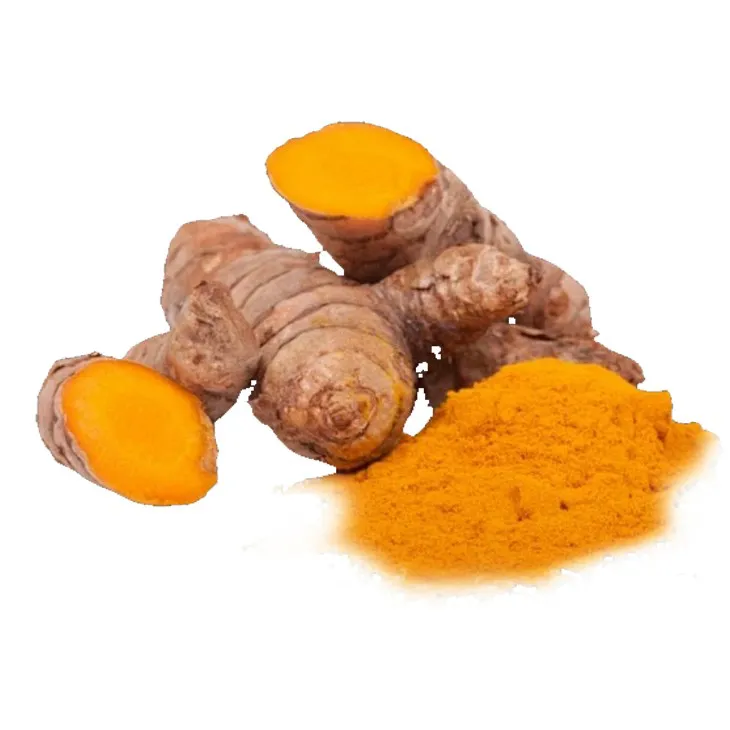- 0086-571-85302990
- sales@greenskybio.com
The extraction process of curcumin.
2024-11-29

1. Introduction to Curcumin
Curcumin is a natural compound that has gained significant attention in recent years due to its numerous potential health benefits and diverse applications. It is the principal Curcuminoid found in turmeric (Curcuma longa), a plant native to South Asia and widely used in traditional medicine, cooking, and as a natural dye.

2. Sourcing of Turmeric
Sourcing turmeric is the first and crucial step in Curcumin Extraction. Turmeric is typically sourced from regions where it is cultivated abundantly, such as India, Indonesia, and other tropical and subtropical areas.
- Quality of the turmeric is of utmost importance. High - quality turmeric should have a rich color, which is often an indicator of a higher curcumin content.
- Farmers need to follow proper cultivation practices to ensure the growth of healthy turmeric plants. This includes using suitable soil, appropriate irrigation, and pest control methods.

3. Pretreatment of Turmeric Material
Once the turmeric is sourced, pretreatment is necessary before the extraction process can begin.
- Washing: The turmeric rhizomes are thoroughly washed to remove dirt, debris, and other impurities. This step is essential to ensure the purity of the final curcumin product.
- Size Reduction: After washing, the turmeric is usually cut or ground into smaller pieces. This increases the surface area available for extraction, which in turn can improve the extraction efficiency. There are different methods for size reduction, such as using a grinder or a cutter.

4. Solvent - Based Extraction
Solvent - based extraction is one of the most common methods for extracting curcumin from turmeric.
- Selection of Solvent: Different solvents can be used for Curcumin Extraction. Commonly used solvents include ethanol, acetone, and hexane. Ethanol is a popular choice as it is relatively safe, can dissolve curcumin effectively, and is suitable for use in the production of products intended for human consumption.
- Extraction Process: The pretreated turmeric material is mixed with the selected solvent in a suitable container. This mixture is then agitated, either by stirring or shaking, for a certain period of time. The agitation helps in the transfer of curcumin from the turmeric matrix to the solvent.
- Separation: After the extraction period, the mixture is separated into two phases - the solvent phase containing the dissolved curcumin and the solid residue of turmeric. Separation can be achieved through methods such as filtration or centrifugation. Filtration is often used when the solid particles are relatively large, while centrifugation is more effective for finer particles.
- Solvent Evaporation: The solvent phase is then subjected to evaporation to remove the solvent and obtain the Curcumin Extract. This can be done using techniques such as rotary evaporation, where the solvent is evaporated under reduced pressure at a relatively low temperature to prevent the degradation of curcumin.
However, solvent - based extraction has some limitations. One major concern is the potential presence of solvent residues in the final product, which may pose health risks if not removed completely. Additionally, the use of large amounts of solvents can be costly and may have environmental implications.

5. Enzymatic Extraction
Enzymatic extraction is an emerging method that offers several advantages over solvent - based extraction.
- Enzyme Selection: Specific enzymes are chosen based on their ability to break down the cell walls of turmeric and release curcumin. For example, cellulases and pectinases are often used. These enzymes can target the complex polysaccharides in the cell walls, making it easier for curcumin to be extracted.
- Treatment Process: The pretreated turmeric is mixed with the selected enzymes in a suitable buffer solution. The mixture is then incubated at a specific temperature and pH for a certain period of time. During this incubation, the enzymes act on the turmeric cell walls, degrading them and facilitating the release of curcumin.
- Separation and Purification: After the enzymatic treatment, the mixture is separated to remove the enzyme and any remaining solid debris. This can be done through filtration or centrifugation. The resulting extract may still contain some impurities, so further purification steps may be required, such as chromatography or crystallization.
Enzymatic extraction is considered more bio - friendly as it does not involve the use of large amounts of organic solvents. It also has the potential to produce a more natural curcumin product with higher bioactivity, as the extraction process is less harsh compared to solvent - based methods.

6. Comparison between Solvent - Based and Enzymatic Extraction
- Efficiency: Solvent - based extraction can often achieve high extraction yields in a relatively short time. However, enzymatic extraction, although it may take longer, can potentially extract a more pure form of curcumin with better bioavailability.
- Safety and Environmental Impact: Solvent - based extraction may pose risks due to solvent residues and environmental pollution. Enzymatic extraction, on the other hand, is more environmentally friendly and generally considered safer as it does not involve harmful solvents.
- Cost: Solvent - based extraction may be less expensive in terms of equipment and initial setup, but the cost of solvents can add up. Enzymatic extraction may require more expensive enzymes, but overall, it can be more cost - effective in the long run, especially considering the potential for higher - quality products.
7. Applications of Curcumin
The curcumin obtained through these extraction processes has a wide range of applications.
- In the Pharmaceutical Industry: Curcumin has shown potential as an anti - inflammatory agent, similar to non - steroidal anti - inflammatory drugs (NSAIDs), but with fewer side effects. It has also been studied for its antioxidant properties and its potential role in preventing and treating various diseases, including cancer, neurodegenerative diseases such as Alzheimer's and Parkinson's, and cardiovascular diseases.
- In the Food Industry: Curcumin is widely used as a natural food colorant, imparting a yellow - orange color to foods and beverages. It is also used as a flavoring agent in some traditional cuisines. Additionally, due to its potential health benefits, it is being explored as an ingredient in functional foods and nutraceuticals.
- In Cosmetics: Curcumin's antioxidant and anti - inflammatory properties make it a valuable ingredient in cosmetics. It can be used in skin care products to help reduce inflammation, improve skin tone, and protect against oxidative damage.
8. Conclusion
The extraction of curcumin from turmeric is a complex process that involves careful sourcing of turmeric, pretreatment, and selection of an appropriate extraction method. While solvent - based extraction has been the traditional approach, enzymatic extraction offers a promising alternative with its own set of advantages. The curcumin obtained through these processes has a wide range of applications in various industries, making it a valuable natural compound worthy of further research and development.
FAQ:
What are the main steps in the curcumin extraction process?
The main steps include carefully sourcing turmeric, pretreating it (such as washing and size reduction), and then using an extraction method like solvent - based extraction or enzymatic extraction to obtain the curcumin product.
What is the advantage of enzymatic extraction compared to solvent - based extraction?
Enzymatic extraction can offer a more natural and potentially more bio - friendly approach, while solvent - based extraction is more common.
Why is pretreatment of turmeric necessary before extraction?
Pretreatment like washing and size reduction is necessary to clean the turmeric and make it more suitable for the extraction process, ensuring better extraction efficiency.
What are the applications of the curcumin obtained through extraction?
The curcumin has wide - ranging applications from anti - inflammatory remedies to natural food colorants.
How is turmeric sourced for curcumin extraction?
The text doesn't provide specific details on how turmeric is sourced, but it emphasizes that it needs to be sourced carefully for curcumin extraction.
Related literature
- Optimization of Curcumin Extraction from Turmeric (Curcuma longa L.)"
- "A Review on Curcumin Extraction Methods and Their Advantages"
- "Recent Advances in Curcumin Extraction Technologies"
- ▶ Hesperidin
- ▶ Citrus Bioflavonoids
- ▶ Plant Extract
- ▶ lycopene
- ▶ Diosmin
- ▶ Grape seed extract
- ▶ Sea buckthorn Juice Powder
- ▶ Fruit Juice Powder
- ▶ Hops Extract
- ▶ Artichoke Extract
- ▶ Mushroom extract
- ▶ Astaxanthin
- ▶ Green Tea Extract
- ▶ Curcumin
- ▶ Horse Chestnut Extract
- ▶ Other Product
- ▶ Boswellia Serrata Extract
- ▶ Resveratrol
- ▶ Marigold Extract
- ▶ Grape Leaf Extract
- ▶ New Product
- ▶ Aminolevulinic acid
- ▶ Cranberry Extract
- ▶ Red Yeast Rice
- ▶ Red Wine Extract
-
Tongkat Ali Extract Powder
2024-11-29
-
Eucommia Ulmoides Extract
2024-11-29
-
Bitter Melon Extract
2024-11-29
-
Stevia Extract
2024-11-29
-
Soy Extract
2024-11-29
-
Green Tea Extract
2024-11-29
-
Curcumin Extract
2024-11-29
-
Dandelion Leaf Extract
2024-11-29
-
Kelp Extract Powder
2024-11-29
-
Sophora Japonica Flower Extract
2024-11-29





















